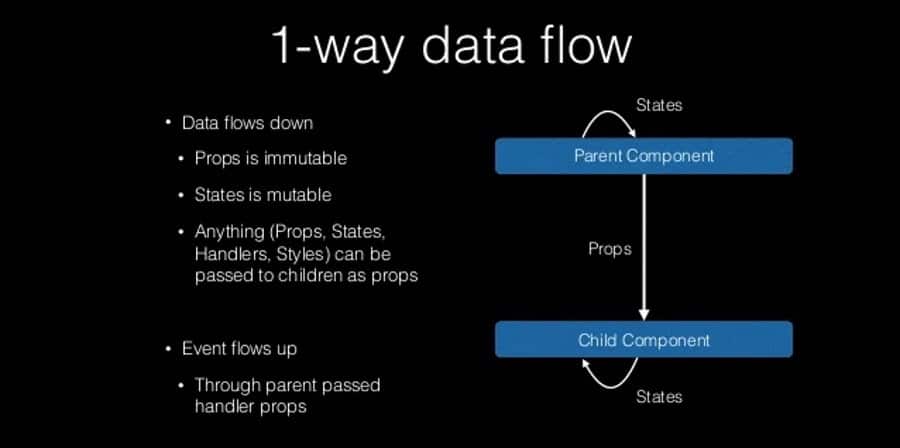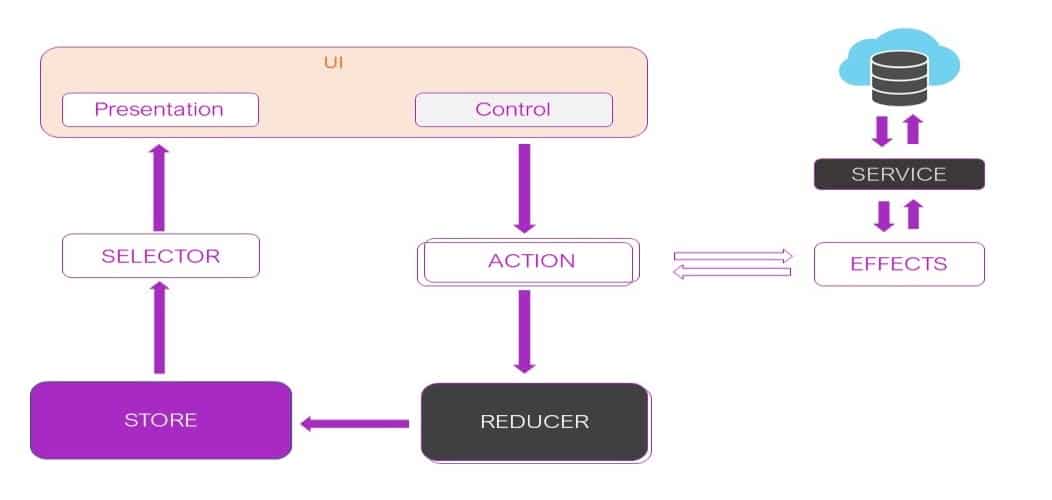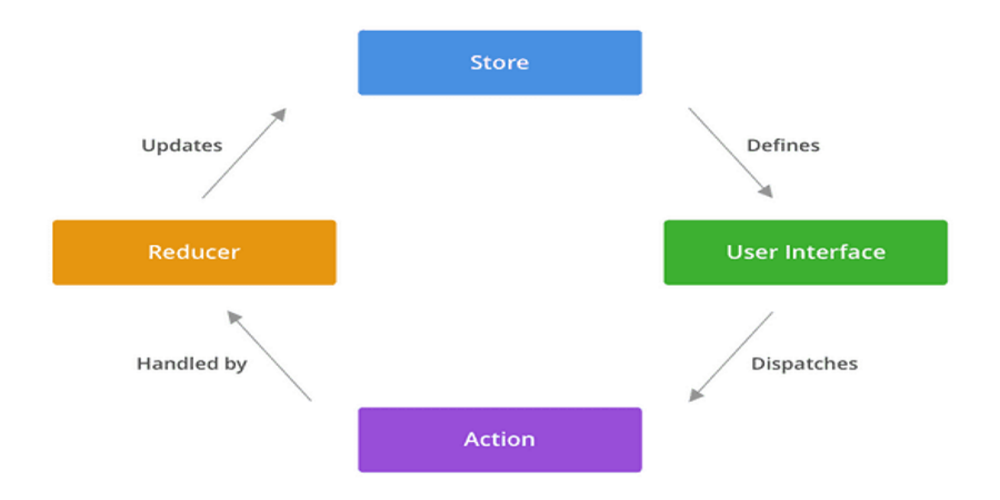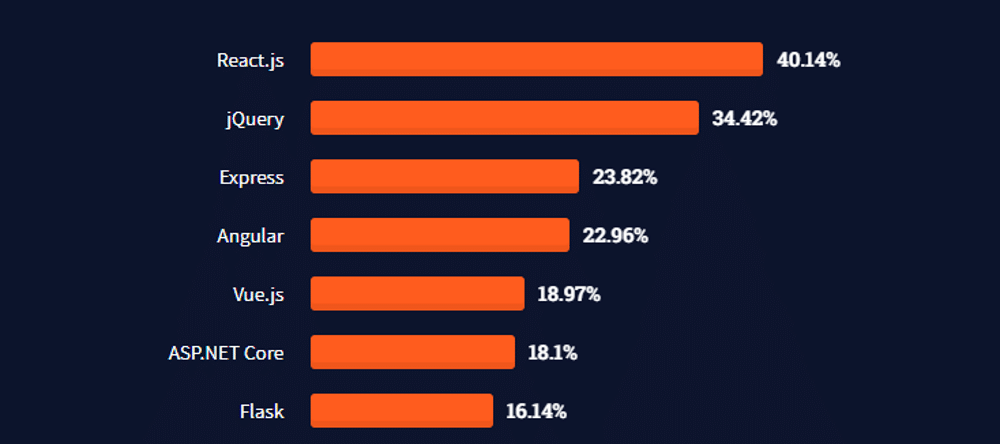Angular and React are powerful and popular JavaScript resources for building just about any frontend project you can imagine. Both facilitate the building of complex and trendy user interfaces for web projects. As a result, they’ve been making headlines frequently among the online developer communities.
There’s one big question: Which one you’ll pick for your next project between Angular vs React?
There are a lot of comparable and unique features in each of them, and both are well suited for creating a project with efficiency in any number of different circumstances. However, you need to factor in other variables like budget, time, effectiveness, learning curve, and so on before deciding.
We’ll discuss and dive deep into the features and benefits of both Angular and React to guide you toward the best solution for you.
Let’s get started!
Angular vs React
Angular is a full-fledged framework offering tools like two-way binding and dependency injection, making development compact, while React, with one-way data binding, is a lightweight library that’s easier to learn, favoring flexibility and individual component-based architecture.
What Is Angular?

Angular is a TypeScript-based open-source platform and web application framework developed by a team from Google. The framework helps to create single-page applications using TypeScript and HTML. Angular is the technology you want if you’re looking to build applications for both mobile and web.
Unlike other frameworks, Angular offers two-way data-binding. This means that if you change a value in the input box, it will automatically update the added property value of the component class. In other words, it will create a real-time, flawless synchronization of data between model and view.
You may already be aware of this fact, but it bears repeating for new developers in the field who may mistake Angular and AngularJS for the same thing: They aren’t.
The core difference between Angular and AngularJS is that the former uses TypeScript (a superscript for JavaScript) as its core, while the latter uses JavaScript. In practice, Angular is more like an updated version of AngularJS.
Why Should You Use Angular?
In Angular, everything happens under the same hood. It offers an ecosystem that allows you to create your application effortlessly. Features like templating, two-way binding, RESTful API modularization, Ajax handling, dependency injection, and many more features make your application development accessible and compact.
Though we’ll have a detailed discussion about Angular features in the features section, here are some of the main reasons you should consider picking Angular.
Google Support
The primary advantage of using Angular is Google. Google has long-term support for Angular. That’s why it’s still scaling up the Angular ecosystem.
All Google apps that you encounter use the Angular framework. As confidence in the framework grows, other developers also find opportunities to learn from seasoned Angular professionals.
Detailed Documentation
Angular provides detailed documentation to guide developers. Rather than forcing you to search in different places, you can find all the explanations you need in the same place. In most cases, absorbing comprehensive documentation is the most efficient way to learn a language (besides practicing with code).
Reduced Coding
Angular promises less time spent coding and helps to create blazingly fast apps. TypeScript helps Angular efficiently identify errors and eliminate them in an earlier phase of the development cycle than many other frameworks.
Angular frees you from worrying about whether something’s a component, service, or any other code type, as it organizes them into neat, separate boxes. It then introduces them as modules. These modules make it easy to structure your application’s functionality, separating elements into features and reusable pieces.
Moreover, Angular offers cleaner coding overall. That said, cleaner coding doesn’t ensure better readability. It merely means a more contradiction-free environment.
Who Uses Angular?
Today, more than 500 major companies around the globe are utilizing Angular. Angular has definitively marked its spot near the top of the popularity list. And because of its diversity, everyone, from the software industry to the gaming industry, can rely on the framework.
Top companies that use Angular include:
Now that you have an idea of what Angular’s all about, let’s take a look at React.
What Is React?

React is an open-source JavaScript library developed by a team from Facebook. React is commonly used to create user interfaces for single-page applications from isolated components.
It can handle web and mobile apps’ view layers. Thus, React supports web and mobile app development. This flexible framework also makes it possible to create complex apps if you utilize it alongside other supporting libraries.
React has one-way data binding, meaning its structure flows from parent to child. However, for two-way data binding, React offers LinkedStateMixin, which sets up the general data flow loop pattern.
In the traditional data flow, for every new data input, one had to reload the whole page to view the changes. In React, a reload isn’t necessary. That’s because React doesn’t create any extra Document Object Models (DOM) as a traditional data flow would when accepting new updates to data.
Why Should You Use React?
React is exceedingly lightweight, and it’s faster to learn and get things started with, too. In addition, React allows third-party libraries for use during the development process. It also sports a bidirectional data binding process.
Here are some of the top reasons to start using React.
Easy to Learn
React is comparatively easy to learn and implement, so businesses can quickly hit the ground running. The library is SEO-friendly, and it focuses on rendering speed. Companies that use React can typically expect to see a reduction in load time and a higher rank in search engine results.
Reduced Coding
In React, you can have similar code for both the client-side and server-side of an application. Hence, any website with React has high-speed advantages, making it attractive to crawlers, users, and developers alike.
Moreover, it’s easy to test because React can treat views as functions of a specific state.
Facebook Support
An excellent advantage of React is Facebook itself. A group of individual developers, particular communities, and Facebook itself maintains this framework.
Like Google for Angular, Facebook feels optimistic about React. And because of its great accessibility and usages, React has a wider range of possibilities for new developers to learn this framework quickly and take that first successful step toward app development.
Who Uses React?
According to the 2018 State of Developer Ecosystem Survey, 60% of developers all over the globe use React. Likewise, Facebook has one of the largest active user bases globally, bolstered by the fact that the company used React for the platform’s mobile app.
Top companies that use React include:
Angular vs React: An In-depth Comparison
Now that you have a good handle on what these two JavaScript children can do, let’s start by taking a look at a side-by-side comparison of Angular vs React.
| Parameters | Angular | React |
|---|---|---|
| Type | Full-fledged framework | JavaScript library |
| DOM Type | Real DOM | Virtual DOM |
| Data binding | Bidirectional data binding | Unidirectional data binding |
| Written in | Typescript | JavaScript |
| Templates | JSX + J% (ES5/ES6) | HTML + TypeScript |
| Abstraction | Medium | Strong |
| JavaScript library inclusion in source code | Not possible | Doable |
| Model | MVC model | Virtual DOM |
| Testing and debugging | Complete solution within a single tool | Needs an additional set of tools |
| Freedom | Limited | Allows a choice of libraries, architecture, and tools |
To make things even more clear, in the next sections, we’ll delve into 12 key topics about them.
1. Similarities
The similarities between Angular and React include:
- Architecture: Angular and React both have component-based architecture. These components are reusable within other components, making them endlessly recyclable. Notably, a component is a piece of a UI. For instance, the components could be a login dialog box with text, a password field, or a login button.
- Open source: Both are open source. As a result, React and Angular have large developer communities that regularly enrich the resources.
- Popular: Developers mostly use both of these technologies to build Single Page Applications. That asserts that you can make single-page applications for faster and better digital solutions.
- Development environment: Angular and React are used to develop the frontend of a mobile or web application.
- Rendering: Angular and React provide efficient client-side and server-side rendering.
- Performance: Angular and React offer similar performance. The difference mostly depends on the user’s perspective.
- Easy to update: Angular and React both offer easy updating. While Angular uses CLI, React depends on external libraries.
2. Usefulness
Both Angular and React are beneficial to frontend developers, which is no surprise when considering their respective specialties. Both small- and large-scale apps benefit from their features and flexibility, allowing developers to help their creations reach their full potential.
Here are some of the ways they’re each used.
Angular
As it’s highly effective in cross-platform app development, businesses prefer Angular for building cross-platform apps to reduce expenses. But at the same time, Angular is a very complex platform. Therefore, it requires elevated effort and experience to master it.
So, when you opt to build your project with Angular, veterans will surely reach for it. The framework also offers several advantages that result in faster and more efficient web apps.
With “differential loading” in Angular, a browser can load less code and polyfills to speed things up. The newest version of the framework lets you create two types of code bundles — one for modern browsers and another for older ones.
React provides a built-in advanced Dependency Injection service, which is excellent for resolving productivity factors and speeding up the development process. As a result, users enjoy a more streamlined experience with improved software design functionality.
When you create a large app, code maintainability becomes an important issue. In Angular, it’s a lot hassle-free. When upgrading from one version to another, developers don’t need to worry about compatibility because Angular automatically updates all the related packages, including HTTP, Angular material, and Routing.
Angular’s AOT compiler converts Typescript and HTML code into JavaScript at the time of build. Thus, it’s already compiled before the browser loads the code, resulting in a faster render.
IVY rendering in Angular translates the components and templates to JavaScript code. Its renderer’s tree-shaking technique is unique — it eliminates unused code, so the browser loads a page quicker.
React
React is simple. You can start learning and creating a project within a much shorter time than other platforms. Because you’ll be using raw JavaScript, you’ll have access to the wealth of JavaScript knowledge already compiled on the web.
What’s more, the JSX allows combining HTML and JavaScript in your code. That makes life trouble-free for developers.
As we know, React has server-side rendering. That’s why it’s SEO-friendly — it can deal with most search engines with ease.
Generally, client-side rendering only sends empty HTML code to a browser, while server-side rendering sends the HTML codes and contents to the browser. After that, a browser can easily index it and rank it higher in search results.
React code is stable because it has a downward data flow. Any change in the child components never affects its mother components. This helps the developers to debug with ease.
3. Features
React and Angular both offer a wide range of features. Some of them are similar, and some are unique. Let’s discuss some of the most significant features of Angular vs React with a comprehensive description.
Angular
Most of the time, the larger a framework, the better it performs. And being a complete framework, Angular offers a whole lot of features.
Here are just a few:
- Built on TypeScript: Angular is built on top of TypeScript, and Typescript is a superset of JavaScript. To catch errors during developing a mega application and identifying bugs, TypeScript portrays a beneficial purpose. More interestingly, you can directly debug typescript codes in a web browser.
- Ajax support: Angular has built-in support for Ajax and HTTP, allowing users to connect and communicate with the backend services and boosting performance. In addition, Ajax reduces the response time for both ends’ requests.
- Component-based architecture: Angular initially started with MVC Model View Controller (MVC) architecture but later shifted to component-based architecture. As a result, you can now divide all applications into completely independent logical and functional components while still testing and running all the application pieces individually.
- Angular CLI: The Angular Command Line Interface (CLI) is one of the most notable Angular features that developers praise. It automates the whole development process utilizing app initialization and app configuration. It also lets you preview your application with LiveReload support.
- Readability: Another aspect of the Angular framework is improved readability. Most new developers easily adapt to reading code in Angular. Moreover, its accessibility makes it much easier for the developers to interact with the framework.
- Easy to maintain: Last but not least, Angular offers superior ease of maintenance. It helps to replace decoupled components with improved ones, which generates clean, easy-to-maintain code and updates.
React
Now let’s take a look at React’s top features:
- Declarative UI: The React engine uses HTML to compose the application UI. HTML is lighter and less complicated than Java. Consequently, the workflow stays uninterrupted, and Angular itself can determine the program flow rather than you spending your valuable time planning for it.
- Maneuverability: React offers a simple UI design and provides numerous extensions to provide total support for the application architecture. Likewise, the React native, an inherited framework from React, is commonly known for building cross-platform mobile applications.
- Clean abstraction: React doesn’t bother the user with its complex internal functions. Internal processes like Digest cycles are not mandatory for the users to learn and understand. As a result, React delivers clear architecture as Flux instead of architectures like MVC/MVVM.
- Virtual DOMS: React provides a virtual DOM that copies the existing DOM and maintains the cache memory, saving you the effort of re-rendering the DOM trees, again and again, each time you update the HTML code. In other words, if you change any state of a component, the Virtual DOM only changes that particular object in the real DOM.
- Reusable components: React provides an independent component-based structure. All your React components can also be recycled in other parts of the application because of this reusability.
- Cross-platform functionalities: Another surprising outcome of React is the spin-off framework called React Native, created for cross-platform mobile application development. In addition, it uses React.js for dedicated mobile application development.
4. Frameworks
Angular is a full-fledged framework, while React is a JavaScript library. Therefore, React has to be paired with a framework to build fast, beautiful, and compatible UI.
Here are some of the React-based frameworks used by developers:
- Material UI
- Ant Design
- Redux
- React Bootstrap
- Atomize
5. Learning Curve
Learning frameworks like Angular or JavaScript libraries like React can take time and effort. Unfortunately, the process is not similarly smooth for every technology.
To that end, let’s have a brief discussion about the learning curve of Angular vs React.
Angular
The learning curve of a framework depends on its versatility, size, and nature of the framework. If you see a steep learning curve, it’s challenging to learn a language or framework.
The learning curve of Angular is steep because of its enormous structure and dynamics. Therefore, pursuing a wide range of conceptions and relevant codes can be difficult for a beginner.
To learn Angular, you also have to learn TypeScript. Typescript is a superset of JavaScript, and some of its syntaxes are exclusive to Angular and aren’t found in other frameworks.
Google has developed Angular and managed it since its inception. They typically release updates to the framework roughly biannually. Because the release dates aren’t always spaced exactly six months apart, it’s difficult for a developer to keep track of the updates and incorporate them into their ecosystems on time.
In addition, learning Angular features such as dependency injection can be trickier for a developer who has already worked with an alternative. That’s because Angular utilizes them differently.
React
React, on the other hand, is comparatively lightweight and easy to get into. It doesn’t require mastering JavaScript. If you already have intermediate-level experience with the language, you’ll be fine. React also natively includes features like dependency injection, which will reduce the learning time for a new learner.
However, it also has unique features and processes you’ll need to understand and master, such as internal state management and components. Though React may seem simpler to learn than Angular, you’ll need to be more comfortable adapting to new technologies.
While it may take less time considering the complexity of the technology, React still needs dedicated effort to master.
6. Dependency Injection (DI)
Dependency injection is a pattern of design in which a class will ask for permission externally rather than creating itself. For instance, a computer class may need a “processor” class. The processor class, in that case, is the “dependency.”
Angular
Angular supports dependency injection accommodating flexibility in both testing and debugging. Another great use of dependency injection is the reusability of a class. For example, you can use different types of “processor” in “Computer” to get different computers. Thus, you don’t have to change any code in the Computer class.
Here’s an Angular DI code example:
import { Injectable } from '@angular/core';
@Injectable({
providedIn: 'root',
})
export class HeroService {
constructor() { }
}React
React has the built-in facility for dependency injection in JSX. DI in React takes place through props and children.
Here’s an example:
const name = 'Josh Perez';
const element = <h1>Hello, {name}</h1>;
ReactDOM.render(
element,
document.getElementById('root')
);7. Data Binding
Data binding is the process of making a connection between the UI and the displayed data. Though the primary purpose is similar across the board, data binding can function differently in different frameworks.
For instance, you can choose fonts and colors in Microsoft Word and Excel’s “Text Formatting” feature. In the UI, changing the font will show you the output with the selected font. That indicates the establishment of a data connection.
Notably, both Angular and React employ two different kinds of data binding.
What’s more, there’s a significant number of differences between these two.
Angular
Angular uses two-way data binding, also known as bidirectional data binding. This means that if you change something in the UI, it also reflates at the other end in a component class.
However, in technical terms, it’s a comparatively slower process.

React
React, on the other hand, primarily uses unidirectional data binding. A unidirectional data binding indicates a one-way parent-to-child data flow. Therefore, you can’t trace it backward.
In addition, there are a few conditions that maintain the unidirectional data-binding:
- Component to View: Any change in the component will cause a shift in the view.
- View to Component: Any change in the view (UI) will cause a shift in the data component.

React one-way data binding (image source: Slideshare)
React one-way data binding explained with directional graph)
This one-way data binding process helps you to write error-free code. It also offers effortless debugging as you have greater control over your data.
However, you can also implement two-way data binding in React if you wish, applying a “change” event on one of your components.
8. State Management
State management is vital in large applications. That said, it’s not always easy to maintain the state of UI components like text fields, radio buttons, and the like.
Let’s take a look at how state management is handled by Angular vs React.
Angular
In Angular, NGRX is a state management library, which permits the use of reactive state management.
NGRX tends to follow FLUX/REDUX. The advantage NGRX provides is that it stores all the states in a single tree, allowing you to access all the forms from anywhere in an application.

React
In React, every individual React component can have a state, so it’s necessary to manage the states of these components separately. Otherwise, in large-scale applications, a developer may face more bugs and errors than they would otherwise.
Generally, REDUX works as a state management library for React. Another one is Recoil, which is the simplest, most lightweight option. But if you have a good understanding of React, you can use Hooks as the essential state management tool, even without an additional library.

9. Essential Tools
If you want to start developing with React or Angular, you need to have the essentials for editing, project setup, rendering, and testing. Here are a few tools Angular and React developers use commonly.
Angular
Angular’s tools include:
- Code editing: Angular is compatible with a variety of code editors. Such as VS Code, Sublime Text, Aptana, etc.
- Project setup: Setting up a project is very easy with Angular CLI (command line interface).
- Server-side rendering: Angular Universal does the server-side rendering in Angular.
- Testing: Jasmine, Protractor, and Karma are widely used for testing an Angular project.
React
React’s tools include:
- Code editing: VS Code, Sublime Text, and Atom are popular options for React coding.
- Project setup: Create React apps (CLI) is used to set up a project in React.
- Server-side rendering: React uses the Next.js framework for server-side rendering.
- Testing: Jest is well known for testing React apps. Enzyme is another testing utility designed to help React developers check their code.
10. Performance
In this section, we compare the performance between Angular vs React with execution time for different processes. This gives us a clear idea of how each of these technologies will perform.
| Action | Angular | React |
|---|---|---|
| Loading | 10ms | 7 ms |
| Scripting | 173 ms | 102 ms |
| Rendering | 3 ms | 6 ms |
| Painting | 2 | 4 ms |
| System | 73 | 129 |
| Idol | 3034 | 3042 |
| Total | 3295 | 3289 |
11. Popularity
Now, after all the discussions and explanations above, you may be curious to find out the popularity of Angular vs React among developers.
Most developers find it challenging to pick between these two because of their individuality and conventional performance over the years. However, if we look at the analyzed data of usage percentage, we can get some real idea about the popularity between the two.
Stack Overflow
According to StackOverflow, around 40.14% of 67k respondents in 2021 chose React, while 22.96% kept their hands on Angular.
The data can mislead you to decide unless we dig deep into it. Notably, more questions were tagged for Angular compared to React.

Developers face more complexity with Angular’s ecosystem. And most beginner developers want to start stress-free.
But on the other hand, if a framework’s developer’s community is large and active, it’s arguably easier and less time-consuming to find solutions to any problems that may arise. That’s why many developers choose to depend on the availability of resources rather than on features alone.
GitHub
On GitHub, React has 175k stars on its repository, whereas, for Angular, the number is only 76.5k. Accordingly, GitHub users are likewise interested in React rather than Angular.
We can assume further analysis of the numbers of NPM manager downloads. It seems like React is leading the chart over Angular, and the number is continuously rising every day.
12. Community
As we already know, Facebook is the creator of React, and Google’s developers built Angular. Support from these two giants is another reason each has gained popularity more quickly than other frameworks. Since their birth, the developer community has done — and continues to do — an exceptional job of updating both React and Angular.
As you might expect, both have large, thriving communities with many active users. Impressive ratings in GitHub and questions tagged in StackOverflow further indicate that.
Angular vs React: Which One Should You Use?
Both these web technologies have some unique features and specialties. In the end, choosing between Angular vs React depends on the team and the type of project.
If you overlook a few drawbacks, Angular is the most comprehensive solution for you. On the other hand, React is exceptionally flexible with core advantages like Virtual DOM and adaptability with other frameworks, libraries, and tools.
Initially, React looks very comfortable to ease into. You can immediately start a project with React. But this doesn’t promise that it won’t get more complicated in the future. In addition, you must have knowledge and experience of working with other JavaScript frameworks and tools to harness React’s full potential.
On the contrary, Angular seems more complex. Therefore, a developer needs to focus and dedicate much time to learning because Angular has a steep learning curve. Once that curve is behind you, though, you’ll find Angular is much easier to maintain and expand upon, especially when it comes to large-scale apps and projects.
Most beginners are likely to start with React and eventually move to using Angular.
Summary
In a nutshell, both of these technologies are one of a kind in their intended purpose. Each has extensive features and capabilities that make them irreplaceable.
However, the final decision of whether to use Angular vs React depends more on the user’s purposes than the functionalities these technologies offer.
Whichever you choose, it’s worth noting that Angular and React programmers nowadays receive greater attention and higher salaries. In upcoming years, interest in building single-page applications will only continue to grow.
Therefore, no matter which appeals to you more, we can count on both Angular and React being popular options for developers for a long time in the future.
Which of these two web technologies did you choose for your latest project? Let us know your experience in the comments section below!



Thanks for sharing a detailed comparison between angular vs react. Keep it Going!